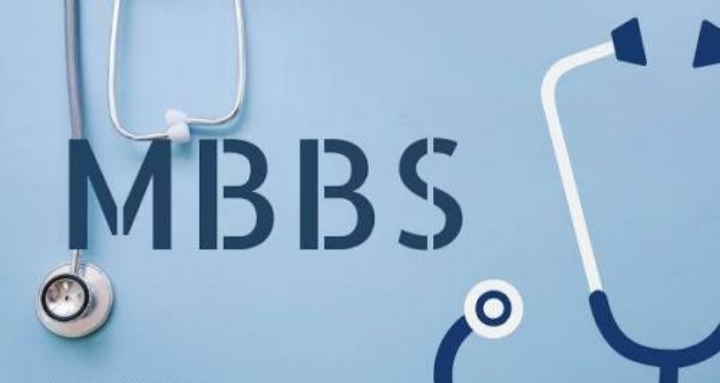
Government Medical College & Hospital (Renamed as Bhima Bhoi Medical College & Hospital), Balangir
The college is situated in a sprawling area of 21.02 acres with the attached hospital at a distance of 5kms away from it within the township of Balangir. The hospital is laid in an area of 12 acres. At the college site, the academic block, administrative block, auditorium, faculty and staff quarters, UG-Boys’ hostel, UG-Girls’ Hostel, Residents’ Hostel, cafeteria, playground, gymnasium etc, have been established.
The hospital has 300 beds with service facility of all the regular clinical departments along with ICU, ICCU, SNCU and separate OPD for each clinical department
[et_pb_section bb_built=”1″ admin_label=”section”][et_pb_row admin_label=”row”][et_pb_column type=”4_4″][et_pb_text admin_label=”Text” background_layout=”light” text_orientation=”left” use_border_color=”off” border_color=”#ffffff” border_style=”solid”]
Balangir is a city and municipality in Balangir district in the state of Odisha, India. It is also the headquarters of Balangir district. Balangir has a rich cultural heritage. It is also known as the cultural hub of Western Odisha. Balangir city has many cultural groups who are trying hard to preserve the dying down Kosali folk arts and dance. Balangir municipality is divided into twenty one wards. It is also home to the Ordnance Factory, Balangir (at Badamal) which is run by the Ordnance Factories Board, Ministry of Defence, Government of India to manufacture various types of products for the Indian Armed Forces. It is spread over an area of 12,200 acres (4,900 ha).
Balangir is located at 20.72°N 83.48°E. It has an average elevation of 383 metres (800 feet) above sea level.
As of 2011 Census of India, Balangir district had a population of 1,648,997. Males constitute 830,097of the population and females 818,900. Rural Population is 1,451,616 and urban population is 197,381. Balangir town had a population of 98,238, males constitute 50,582 of the population and females 47,656. Communicative language of Balangir is Kosali and for education and official purpose English, Hindi and Odia are mostly used.
Balangir’s name is said to have been derived from Balaram Garh, a fort, built here in the 16th Century by Balram Deo, the 19th Raja of Balangir (Ex-Patna State) and founder of Sambalpur kingdom.
Balangir was an obscure village till 1871 when the Court of Wards administration during the minority of the then ruler Ram Chandra Deo III shifted the capital from Patnagarh. Immediate steps were taken to build a planned township.
Patnagarh, which was the capital of the Kingdom of Patna for several centuries, was considered unsuitable to be the state headquarters because of its unhealthy climate. The moats and the bamboo thickets which had long protected the place against enemies became breeding ground of mosquitoes causing widespread malaria. The place was also not on the direct road from Bhawanipatna to Sambalpur. So, Balangir was selected to be the headquarters not only because of its climate but also for its admirable location on the route connecting the headquarters of Sambalpur with that of Kalahandi.
The Plan of Balangir Town was prepared by Pandit Chintamani Bidyabhusan as a square town with roads crossing one another at right angles was accepted and the new township was constructed to the south of the old village.
Sir Douglas, the then Deputy Commissioner of Sambalpur, got the sanction of the government and transferred the Headquarters from Patnagarh to the new town of Balangir in 1872. Old Balangir is now known as Junha Dihi meaning the old house site.
During the administration of Maharaja Rajendra Narayan Singh Deo the city was beautified by laying out Rajendra Park and by the Rajendra Experimental Farm and construction of several fine buildings. The X-ray ward, the maternity ward and the Dairy farm were started and a Museum for preservation of antiquities was also organised. Balangir City is famous for Sambalpuri Sarees and dress materials
Vision & Mission
[et_pb_section bb_built=”1″ admin_label=”section”][et_pb_row admin_label=”row”][et_pb_column type=”4_4″][et_pb_text admin_label=”Text” background_layout=”light” text_orientation=”left” use_border_color=”off” border_color=”#ffffff” border_style=”solid”]
To teach and train undergraduate medical students to prepare and produce Indian Medical Graduates for Health Care needs of the state of Odisha and the country at large with a desire to improve the doctor population ratio.
To broaden the scope of healthcare services to tertiary levet for both tribal, rural and urban population of Western Odisha and neighbouring states of our country with a humane touch.
To implement state and national level health programmes in terms of training, monitoring, supervision and to develop expertise in providing healthcare for all.
[/et_pb_text][/et_pb_column][/et_pb_row][/et_pb_section]
Government Medical College & Hospital
Balangir, Balangir, Odisha
Email: [email protected]
Phone:06652-250066
Fax:06652-250011
M.B.B.S.

Bachelor of Medicine, Bachelor of Surgery (Latin: Medicinae Baccalaureus, Baccalaureus Chirurgiae; abbreviated in many ways, most commonly MBBS, but also MB ChB, BMBS, MB BCh, MB BChir), is the primary medical degree awarded by medical schools in countries that follow the tradition of the United Kingdom. The historical degree nomenclature states that they are two separate undergraduate degrees. In practice, however, they are usually combined as one and conferred together, and may also be awarded at graduate-level medical schools.
Bachelor of Medicine and Bachelor of Surgery (MBBS), is a professional degree in medical science. A person holding the MBBS degree becomes a certified medical practitioner. The duration of MBBS course is five years and six months including one year of rotational internship at hospitals, health centres, and health camps organised by non-profit organisations (NGOs). MBBS course syllabus includes studies on anatomy, pharmacology, pathology as well as community health & medicine, paediatrics, and surgery. The syllabus, prescribed in such a way that MBBS degree holders can choose a specialisation for further majoring and practising medicine. The career specialisations for MBBS students are Nephrology, Cardiology, Gynecology, Anesthesiology, Organ Transplant, Endocrine, and General Surgery, etc.
- Log in to post comments
- 57 views
